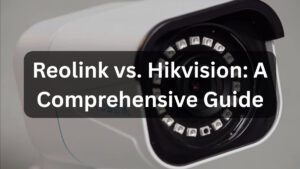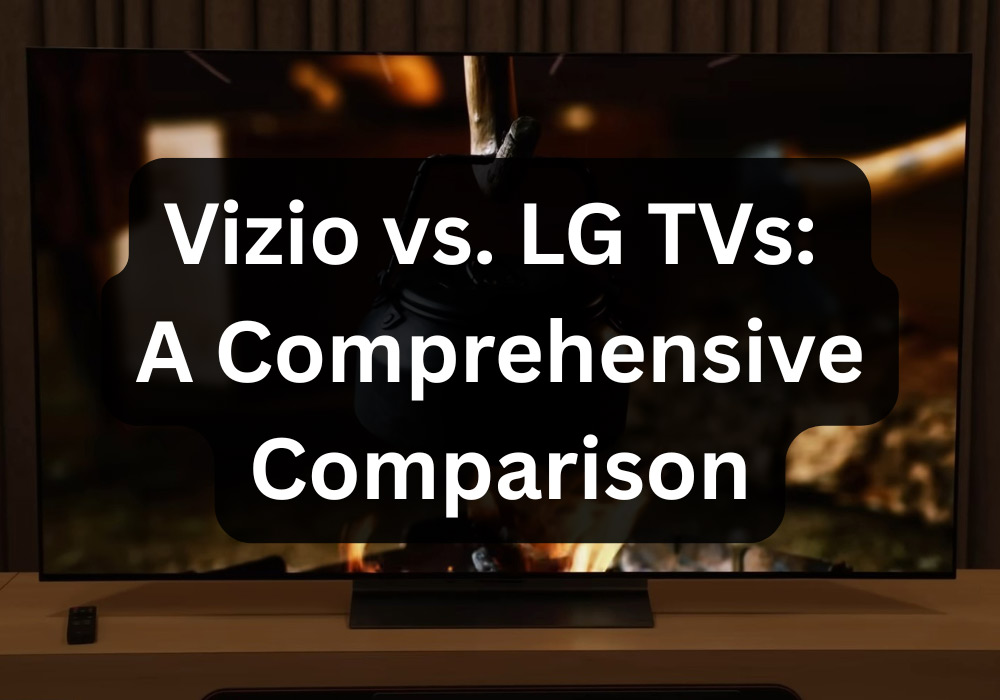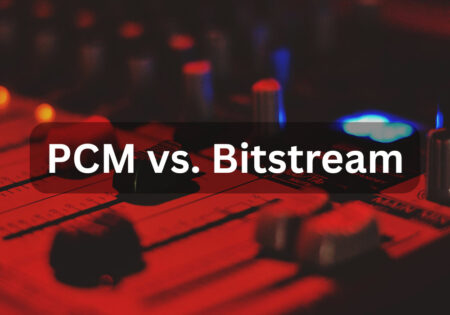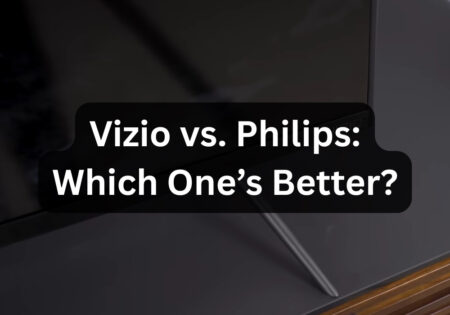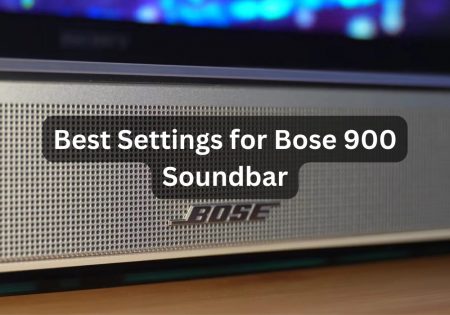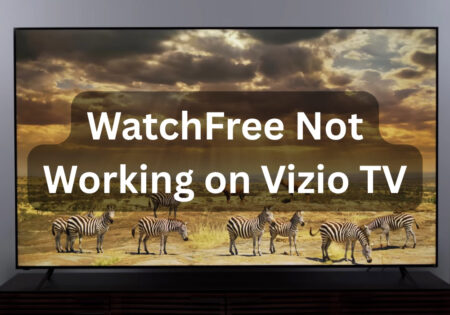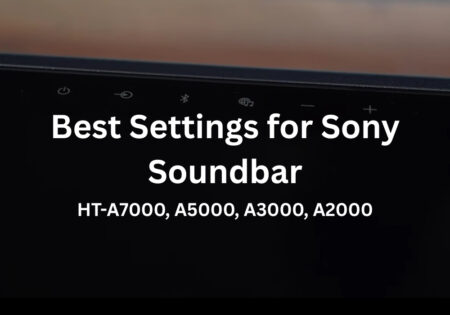Here’s your complete LG vs. Vizio guide! Both have established themselves in home entertainment with technologies like Dolby Vision, webOS, and the SmartCast platform. I’m Erfan Askari and for years I have been following the world of smart home technology for years, analyzing the quality of OLED panels and comparing smart TV platforms. In this article, we will see which brand can truly transform your TV viewing experience.
LG or Vizio, Which Is Better? (Quick Answer!)
| Feature | LG | Vizio | Winner |
|---|---|---|---|
| Picture Quality | Superior OLEDs, accurate color, deep blacks | Bright, punchy QLEDs but weaker contrast | LG |
| Gaming Performance | 144Hz refresh rate, full VRR, Game Optimizer | 120Hz max, decent VRR, slightly higher input lag | LG |
| Smart Platform | webOS—fast, intuitive, app-rich | SmartCast—functional but slow, fewer native apps | LG |
| App Availability | Extensive, includes cloud gaming support | Limited; relies heavily on casting | LG |
| Connectivity | HDMI 2.1 on all ports, eARC, Bluetooth, solid Wi-Fi | HDMI 2.1 on select ports, occasional Wi-Fi issues | LG |
| Design & Build | Premium materials, sleek profiles across all tiers | Solid but bulkier, more utilitarian | LG |
| Customer Support | Fast, reliable, responsive live chat and service | Inconsistent, slower claims process | LG |
| Budget TV Value | Decent, but lacks contrast and brightness | Great contrast and color for the price | Vizio |
| Best For Movie Lovers | OLED + Dolby Vision IQ = unmatched cinematic quality | Good brightness but lacks depth in dark scenes | LG |
| Best For Bright Rooms | Good but not top brightness outside OLED | High peak brightness, especially in mid-range | Vizio (mid-range) |
| Best Overall Brand | Balanced, polished, and premium experience | Good value, but hit-or-miss performance | LG |
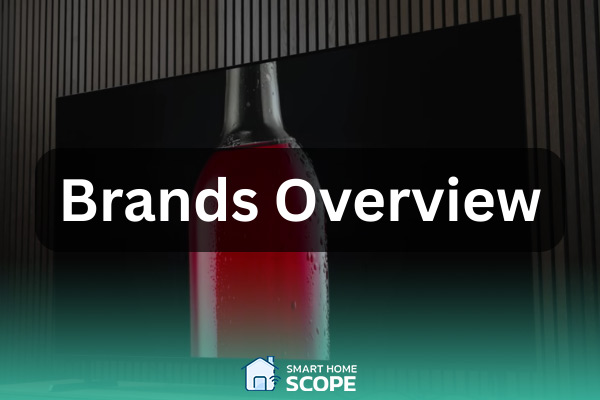
LG vs. Vizio: Brands Overview
LG Overview
When it comes to advanced display technology, LG is usually the first name that comes to mind, and for good reason.
The Korean tech giant has been a leader in the TV market for years and is considered one of the industry’s major players. LG is particularly key in OLED panels, which it produces for its products and other brands.
In terms of design, LG usually goes for a minimalist and very stylish look. At the same time, advanced features, such as Dolby Vision IQ and Filmmaker Mode, are hidden underneath this simple exterior.
What I have always admired is LG’s attention to user experience. Their webOS operating system is simple and pleasant to look at, and incredibly fast and smooth to use.
Of course, the story doesn’t end there. The brand’s α9 Intelligent Processor continuously optimizes the picture and sound to deliver exceptional quality, whether binge-watching Netflix or gaming on the PS5. In short, you can always count on a professional and seamless experience with LG.
Vizio Overview
Vizio, on the other hand, is a value-for-money champion. The California-based American brand has carved out a niche by offering high-quality TVs at reasonable prices.
What makes Vizio special is that even in its mid-range models, it offers advanced technologies like Quantum Dot, local dimming, and full-array backlighting, features usually only found in more expensive models from its competitors.
In my personal experience, Vizio TVs deliver more than you pay for. They support a wide range of HDR formats like Dolby Vision and HDR10+. New models also come with HDMI 2.1 and FreeSync VRR technology, which is excellent news for gamers.
The SmartCast platform isn’t as smooth as LG’s webOS, but it’s functional and improves with each update. If you’re looking for a feature-rich and affordable TV, Vizio is definitely an option.
If you’re a true Vizio fan, make sure not to miss my guide on the best Vizio smart TVs.
LG vs. Vizio: Picture Quality
LG UT7570 vs. Vizio M6 Series Quantum 2022 Picture Quality: The Budget Class
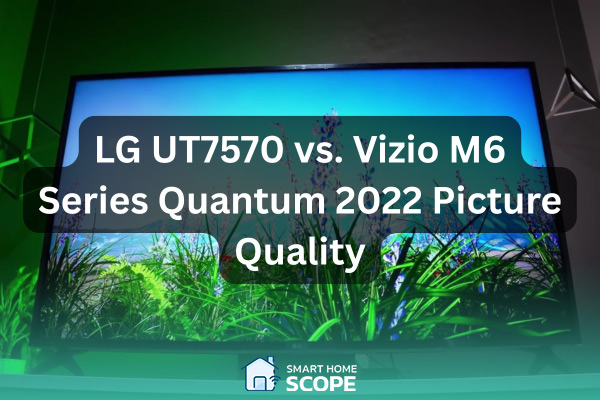
When it comes to budget TVs, we have to be realistic. No one expects the stunning quality of OLED, but sharpness, contrast, and color accuracy still matter.
I tested the LG UT7570 and the Vizio M6 Series Quantum 2022 closely, and it’s interesting to note that the difference in picture quality between the two was more than I expected.
The LG UT7570’s most important feature is its use of an IPS panel. This TV’s advantage is its wide viewing angles, meaning that if you look at the image from the sides, you will notice much less color and brightness drop-off. But this advantage comes at a certain price: the black level is very weak, and a layer of gray blurs the image in dark scenes.
The image’s brightness is also lower than expected, especially in bright rooms. Even though it uses technologies like AI Upscaling and HDR10 support, it falls short in rendering HDR content, which is heavily dependent on brightness. It does not produce a vibrant and impressive image.
In contrast, the Vizio M6 Series Quantum 2022 is a significant upgrade in this price range. It uses a VA panel with narrower viewing angles but offers deeper black levels and much better contrast.
The presence of full-array backlighting and a Quantum Dot layer makes colors more vibrant and HDR content look more impressive. Of course, it’s not perfect, blooming is visible due to limited local dimming, and it’s not a light cannon. However, it offers a much more cinematic visual experience in the budget category than its LG competitor.
When my friends are looking for a budget-friendly TV that also performs well, I usually recommend the M6. This model is exactly where price and quality meet. For more budget options, also read my TCL vs. Vizio article.
While the LG UT7570 may be a decent option for everyday viewing or as a second TV, it’s nothing to write home about when truly enjoying the picture.
LG QNED85T vs. Vizio Quantum Pro QLED: The Mid-range Class
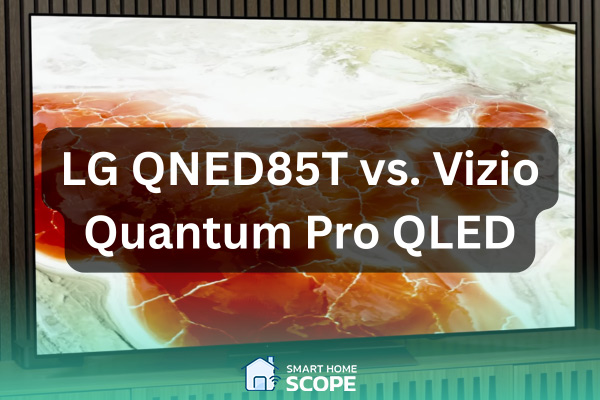
This is where the competition gets interesting; most buyers make their decisions in the mid-range, where good quality meets reasonable price. If, like me, you’re looking for a TV that feels like a high-end product without paying OLED money, there are two solid options: the LG QNED85T and the Vizio Quantum Pro QLED.
LG’s QNED85T has an attractive combination: Mini LED backlighting combined with Quantum Dot technology. This combination results in excellent picture brightness and good ambient light management, a big plus for brightly lit living rooms.
Colors are accurate and eye-catching in SDR content. Still, the punchy effect you’d expect is less noticeable regarding HDR content. The main problem is the VA panel, which, while it has better contrast than LG’s lower-end TVs, still doesn’t deliver the black depth of OLED or professional VA panels.
The local dimming system is also a bit conservative and doesn’t have the intensity needed to create truly dark scenes.
Now comes the Vizio Quantum Pro QLED. This is where the story changes. Despite using an IPS-like panel (usually at the cost of lower contrast), this model still delivers incredibly high brightness and a wide color gamut.
Vizio has tuned this model to make images instantly eye-catching, especially in bright scenes or sports broadcasts; the picture shines.
Of course, its local dimming is a bit rougher than the LG, and sometimes, there is extra light (blooming) around objects, but it performs reasonably well considering the price and class of the device. The more energetic tone mapping also makes HDR content more vibrant and dynamic.
One key difference I noticed in my experience was that Vizio focuses on creating an immediate and attractive impact. At the same time, LG is more concerned with color accuracy and overall image balance.
If you love calibrating your image precisely, you’ll probably prefer LG. But if you want a stunning image without having to do a lot of tweaking, Vizio seems like a stronger choice.
To sum up, the Vizio Quantum Pro is the best choice for everyday viewing and maximizing HDR content. The LG QNED85T feels more mature and precise, but the Vizio is more exciting and energetic.
Also Read:
Samsung vs. Vizio
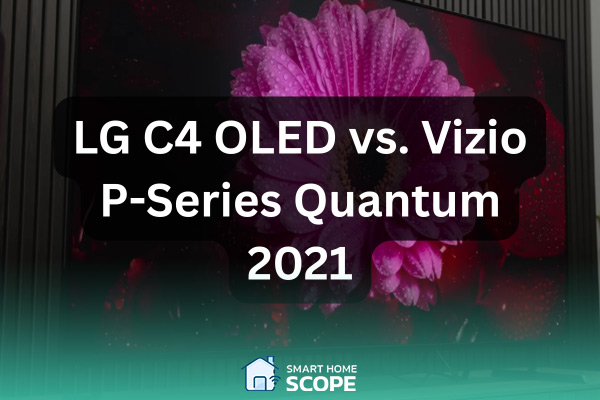
LG C4 OLED vs. Vizio P-Series Quantum 2021: The Premium Class
This part of the comparison is quite spectacular when it comes to serious competition between big brands. For someone like me, for whom picture quality is everything, coming face to face with the LG C4 OLED and the Vizio P-Series Quantum 2021 is like seeing two different styles of performing the same visual art.
Let’s start with the LG C4 OLED; this TV is the definition of a cinematic experience at home. Self-illuminating OLED pixels let you see absolute darkness exactly where you need it, without any trace of backlight or distracting shadows.
Combined with the 7th generation α9 Intelligent Processor and Dolby Vision IQ, this technology delivers a quality that blurs the line between TV and movie screen.
What always impresses me is that the colors remain vibrant without losing quality even when you watch from an indirect angle. The depth of shadows, the softness of skin tones, and the astonishing clarity in 4K movies make for a flawless visual experience.
Our Vizio P-Series Quantum 2021 also has a lot to say. It comes with a VA panel and full local dimming, and one of its selling points is its incredible brightness; it can produce nearly 1,000 nits of brightness in HDR mode, which is great for brightly lit rooms.
Visual content looks amazing with support for advanced HDR formats like Dolby Vision and HDR10+. However, even with 210 local dimming zones in the 75-inch version, it can’t replicate OLED’s subtlety in displaying dark scenes; halos around bright objects and crushed shadows are still visible in dark images.
The Vizio P-Series is a solid value if you want a fast, bright TV for gaming or watching sports. But for those looking for a flawless picture, true-to-life contrast, and a cinematic viewing experience, the LG C4 is a solid choice.
So, Which Brand is the Winner in Picture Quality?
If you’ve been following me at this point in the comparison, it’s probably clear that LG has always been ahead of the curve in one key area: picture accuracy. Whether it’s the deep blacks of the OLED C4 or the color fidelity of the QNED85T, LG has always focused on delivering accurate, true-to-life images.
LG’s true strength lies in the subtleties of color, stunning contrast, and flawless shadow rendering, especially in the OLED series. When you watch a movie on the LG C4, you see exactly what the director intended.
Of course, Vizio isn’t just in the budget and mid-range segment but has cemented its place. The M6 Quantum series easily outperforms the LG UT7570 in contrast and brightness. The Quantum Pro QLED is also a winner, with its vibrant colors and more vivid display, especially for those who like to watch a brilliant picture without the hassle of adjusting picture settings.
But ultimately, when we look at the picture in all lighting conditions, content types, and screen sizes, LG still comes out on top. The brand’s serious investment in OLED technology has given it an edge that Vizio has yet to match.
Vizio does an excellent job for its price, but LG is still the safer choice for those who want the best possible quality.
Winner: LG stands out, particularly in the premium category. Vizio performs well in the mid-range and budget segments; however, LG’s consistency and OLED advantage ultimately make it the top choice.
LG reigns supreme with unwavering finesse and OLED brilliance, while Vizio carves its niche in the realm of the practical and price-conscious
LG vs. Vizio: Gaming Experience
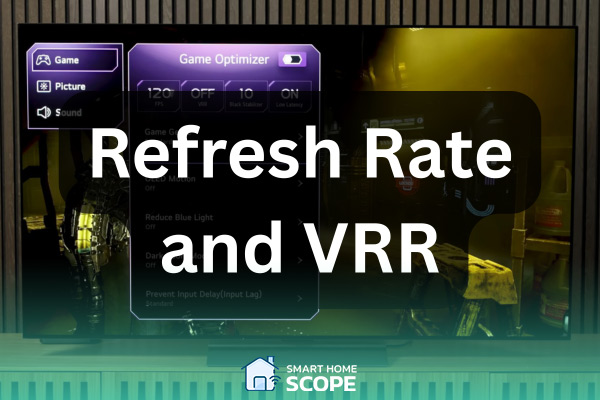
LG vs. Vizio: Refresh Rate and VRR
For gamers, a high refresh rate and proper VRR support are essential; there’s nothing worse than screen tearing or lag in the middle of a game. If we compare LG and Vizio, LG has the upper hand in this area.
With a 144Hz refresh rate and full HDMI 2.1 support across all ports, LG’s C4 OLED is a solid choice for serious gamers.
More importantly, LG’s C4 OLED supports all VRR standards, including G-Sync, FreeSync Premium, and HDMI VRR. The Game Optimizer mode also offers advanced features like real-time frame rate and latency display, a serious advantage for fine-tuning gaming performance.
On the other hand, Vizio is not without its competition models like the Quantum Pro and the budget M6 series, which feature HDMI 2.1 and FreeSync Premium Pro.
The Quantum Pro’s ability to run games at 4K resolution at 120Hz is impressive, especially for console gamers. However, the limited number of HDMI 2.1 ports and the not-so-smooth performance when switching between different frame rates are still weaknesses that sometimes hinder the gaming experience.
Overall, LG delivers a smooth and powerful gaming experience with high compatibility, consistent performance, and a well-thought-out design. Vizio has made some good progress, but still falls short of LG’s level of integration and performance in the gaming space.
Refresh Rate & VRR Comparison Table
| Price Class | Model | Refresh Rate | VRR Support | Winner |
|---|---|---|---|---|
| Budget | LG UT7570 | 60Hz | No VRR | Vizio M6 Series |
| Vizio M6 Series Quantum 2022 | 60Hz | FreeSync (Basic) | ||
| Mid-Range | LG QNED85T | 120Hz | HDMI VRR, FreeSync | LG QNED85T |
| Vizio Quantum Pro QLED | 120Hz | FreeSync Premium Pro | ||
| Premium | LG C4 OLED | 144Hz | HDMI VRR, FreeSync, G-Sync | LG C4 OLED |
| Vizio P-Series Quantum 2021 | 120Hz | FreeSync (Basic) |
Also Read:
Vizio vs. Hisense
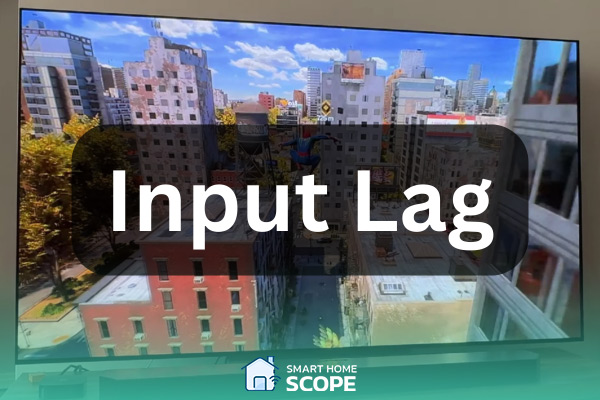
LG vs. Vizio: Input Lag
For gamers who value timing, whether in fast-paced shooters or competitive fighting games, input lag is a significant factor. After testing all six models in this review, it’s clear that one brand offers more consistent performance in this area.
Let’s start with LG. All models have low input lag, from the budget UT7570 to the flagship C4 OLED. The C4 is particularly responsive in Game Optimizer mode, about 5 milliseconds at 4K resolution at 120Hz.
Even the mid-range QNED85T stays under 10 milliseconds, perfectly acceptable for serious gamers. Plus, the automatic activation of ALLM mode when you connect a console means you’re ready to play without manually adjusting settings.
But back to Vizio. There are some improvements in models like the Quantum Pro and M6. The P-series, for example, has about 10-12 milliseconds of latency at 4K/120Hz, which is competitive. The M6 is a bit more, but still under 15 milliseconds.
However, from personal experience, there is one downside to Vizio’s interface: SmartCast can sometimes be sluggish when exiting or switching between apps. This isn’t directly input lag, but it does affect the overall feel of speed and responsiveness.
Finally, LG’s Game Optimizer allows gamers to fine-tune their games, from live frame rate and latency displays to dedicated settings for different game genres. In contrast, the Visio Gaming settings are simpler and more limited, and can be a bit confusing for novice users.
The bottom line is that the LG is the better choice if the slightest delay or pause bothers you, whether in-game or when navigating menus. It’s faster to respond, has smoother performance, and offers a cut above the rest in terms of gamers’ experience.
Input Lag Comparison Table
| Price Class | Model | Input Lag (4K @ 60Hz) | Input Lag (4K @ 120Hz) | Auto Low Latency Mode (ALLM) | Winner |
|---|---|---|---|---|---|
| Budget | LG UT7570 | ~15 ms | N/A | Yes | Vizio M6 Series |
| Vizio M6 Series Quantum 2022 | ~11 ms | N/A | Yes | ||
| Mid-Range | LG QNED85T | ~10 ms | ~6 ms | Yes | LG QNED85T |
| Vizio Quantum Pro QLED | ~13 ms | ~8 ms | Yes | ||
| Premium | LG C4 OLED | ~9 ms | ~5 ms | Yes | LG C4 OLED |
| Vizio P-Series Quantum 2021 | ~12 ms | ~7 ms | Yes |
Which Brand Provides a Better Gaming Experience?
My experience with these models shows that LG covers all gaming needs well. The C4 OLED model is unbeatable in this area with its ultra-low input lag and support for a 144Hz refresh rate. The Game Optimizer feature also acts as a professional tool that takes the gaming experience to the next level. Vizio also has acceptable performance, especially in its budget models, but LG’s elegance and harmony are rarely seen in its products.
LG excels in gaming, with the C4 OLED delivering fluid brilliance and pro-level finesse. Vizio holds value, but rarely matches LG’s graceful precision.
Overall winner for gaming: LG.
Smart Features
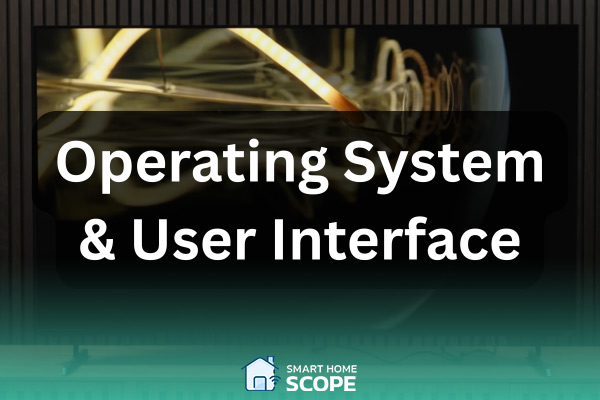
Operating System and User Interface
If you’ve ever struggled to find an app or navigate through complicated menus, you probably know how much your TV’s operating system can impact your experience. In my reviews of LG and Vizio TVs, this was one area where the difference was noticeable.
Let’s start with webOS on LG TVs, a clean, colorful, and incredibly fluid interface. The 2024 version, used in models like the C4 and QNED85T, features customizable cards, quick access to settings, and helpful smart suggestions. There’s also the ability to create user profiles, which is excellent for homes with multiple users.
On the other hand, Vizio uses SmartCast, which is easy to set up but clunky. Setup takes a while, navigation is complicated, and animations are sometimes laggy.
SmartCast has gotten better features and app support over the years, but that lingering, inflexible feeling remains. There’s also voice control, built-in Chromecast, and AirPlay 2, but you’ll usually need another device for more convenience.
Overall, if speed, smoothness, and user interface efficiency are important to you, the LG is hands down the best. Everything feels noticeably fast and seamless, whether streaming or switching inputs.
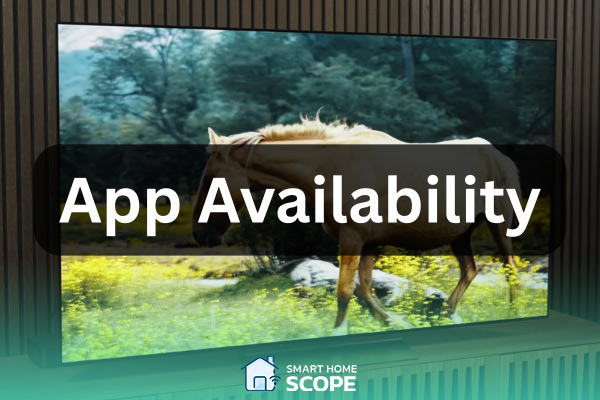
App Availability
If you’ve ever tried to open a particular streaming service and found that it wasn’t even in your TV’s app list, you probably know how frustrating it can be.
It’s not just about the number of apps. More importantly, it’s about whether your apps are available, how quickly they load, and whether they work well. In my experience with LG and Vizio TVs, the difference between the two is noticeable.
LG TVs come with almost all the major apps right out of the box, including Netflix, Prime Video, Disney Plus, Apple TV Plus, YouTube, Hulu, HBO Max, and more. LG’s content store is also constantly updated, and I’ve never searched for an app and couldn’t find it.
More specialized apps like Twitch, Plex, or local services are supported. These apps are optimized for webOS: they load quickly, support 4K HDR content, and rarely freeze or crash.
But Vizio is a different story. Its SmartCast app store is more limited, and while you can stream from your phone with Chromecast or AirPlay 2, it’s not always convenient.
Apps like Netflix and YouTube are on TV, but some apps are either slow to update or unavailable. I used a Roku or Fire Stick a few times to get all the platforms I want.
What’s cool about LG is that it even has native support for cloud gaming services like GeForce now. If you’re looking to play games beyond consoles, that’s a huge plus, something the Vizio doesn’t have.
Which Brand Wins in Smart Features?
The clear winner is LG. The webOS platform is a step ahead of Vizio’s SmartCast in speed, smoothness, and variety of apps.
While Vizio offers built-in Chromecast and AirPlay, the slow interface and limited number of native apps make it a less enjoyable experience. LG is a safer, more complete choice if smart features are important to you.
LG triumphs with a swift, polished webOS and a rich app ecosystem. Vizio’s SmartCast, though armed with Chromecast and AirPlay, stumbles with sluggishness. For refined smart features, LG is the clear heir.
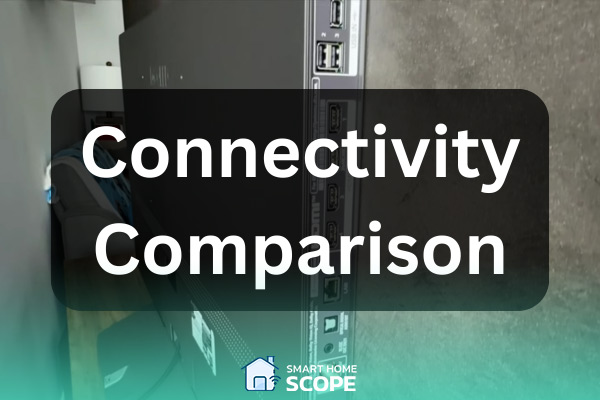
Vizio vs. LG: Connectivity Comparison
In 2025, TV connectivity will be about more than just a few ports. Today, features like HDMI 2.1 support, eARC, and stable wireless performance will significantly determine whether a TV is future-proof. When it comes to comparing LG and Vizio, the differences are clear.
Starting with LG, all three models in UT7570, QNED85T, and especially the C4 OLED, shine regarding port selection and bandwidth. The C4 offers four full-bandwidth HDMI 2.1 inputs. You can connect multiple high-end devices like next-generation consoles and professional audio systems without limitations.
The QNED85T also equips all of its inputs with HDMI 2.1, which many more expensive TVs don’t have. In addition, Bluetooth 5 connectivity and optical out are standard across all LG models. I found setting up and using these ports to be a breeze.
But with Vizio, things are a little different. High-end models like the Quantum Pro and P-Series support HDMI 2.1, but not fully on all ports. If you want to connect your console or sound system properly, you must know exactly which port is which can confuse casual users, though it’s not that complicated.
The M6 series, which is more affordable, lacks some modern features like full eARC or multiple high-bandwidth inputs. On the other hand, Wi-Fi on Vizio TVs isn’t always reliable, especially if you have an older modem or router. I’ve experienced slowness or buffering while streaming several times.
If you’re setting up a complete home theater or gaming setup, LG gives you the flexibility and reliability you want in the long term. Vizio covers the basics well, but LG delivers the full package.
In 2025, LG outpaces Vizio with flawless HDMI 2.1 integration, steadfast wireless, and a setup as smooth as silk. Vizio, though serviceable, stumbles on depth and future-proof finesse.
Winner: LG, for consistency and feature-rich ports.
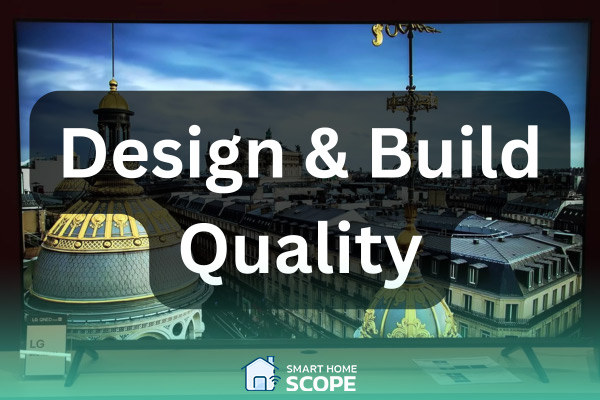
Design and Build Quality
Design may not be a top priority at first glance, but once the TV is mounted on a wall or stand in your living room, it becomes a real eye-catcher. LG and Vizio have different philosophies in this regard. After working with all six models, their design styles reflect each brand’s vision for quality.
LG has tried to maintain a modern look even in its budget model, the UT7570, which has a slim bezel and simple form that conveys a minimalist, up-to-date feel. In the QNED85T, the build quality is stepped up; the body has a brushed metal frame and a more solid feel.
However, the pinnacle of elegance is found in the C4 OLED model, which is very thin and light and has a design that almost hovers. Everything, from the stand to the remote control, exudes a sense of luxury and class. LG pays attention to even the smallest details, resulting in a sleek design and high durability.
Vizio, on the other hand, has a more functional and simple design style. The P-Series and Quantum Pro models have an industrial look and solid construction. Still, they lack the visual sophistication and elegance of brands like LG.
The bezels are a bit thicker, and the stands, especially larger ones, feel more rugged. They’re stable and practical, which matters if you’re not wall-mounting. The M6 has a simpler design and is built with more plastic, fewer details, and a casual look.
In terms of durability, my experience has shown that LG products maintain their appearance better over time. The frames don’t make weird noises or creak, and the body has less discoloration.
On the other hand, Vizio has a heavier build and is less refined, which is quite noticeable when you install it.
LG easily takes the design crown if you’re into aesthetics and premium craftsmanship.
Conclusion
This was my complete LG vs. Vizio guide. After reviewing and working with all six models, LG has the upper hand in most key areas, such as overall quality, smart features, gaming performance, and technical support, especially in the mid-range to premium segment. Vizio performs well in the budget segment and is competitive in price, but falls behind in details, software-to-hardware integration, and consistent quality. If you want a complete, hassle-free experience, LG is still the brand to compete.
